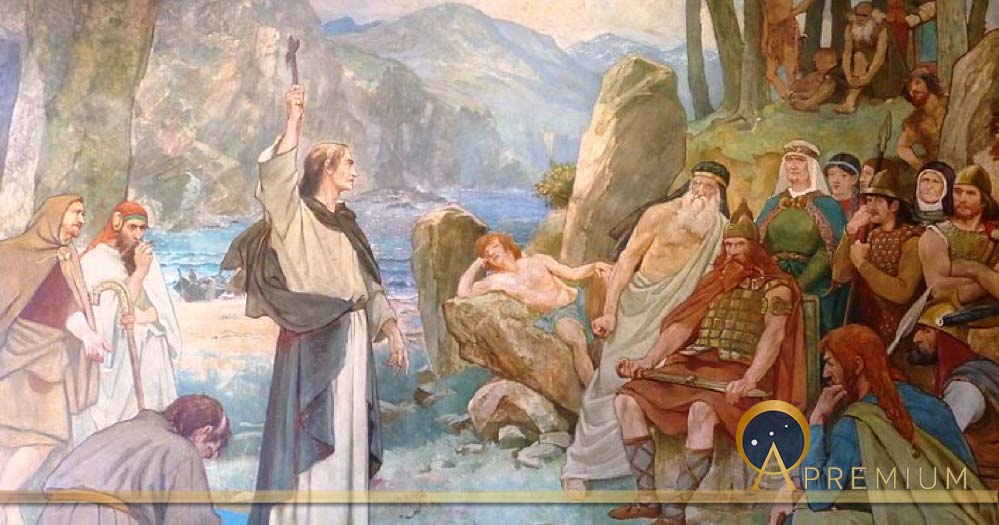The End is Nigh, Scotland’s Magic Isle of Salvation
A curious Old Gaelic prophecy is listed in the Ulster Journal of Archaeology, January 1853, which originated in the west coast of Scotland or Ireland and its meaning has eluded explanation for over 1,000 years. However, a chink in its armor offers the researcher an enchanting line of enquiry into early Celtic Christian cosmology and religion. The prophecy reads:
”Seven years before the end of the world, a deluge shall drown the nations: the sea at one tide shall cover Ireland and the green-headed Islay. But Columba’s Isle shall swim above the flood.”
Ten centuries of Celtic bards have attempted to decode the meaning of this ancient flood prophecy with ‘Celtic Christian’ reasoning, yet it remains cryptic. The big question is: “Why was Columba’s Isle isolated as the ‘island to swim above’ the prophesied flood rather than any other of the thousands of similar islands off the west coast of Scotland?
The Legend of Saint Columba
This question is heavily loaded, and it essentially acts as a key to this tightly locked mystery. An approach with a little esoteric, a tad more metaphysical and a heap more than a Judeo-Christian outlook, may deliver the answer, beginning with an investigation of the raw data provided in the prophecy such as the island’s name.

Columba’s Isle, is Iona, a small island in the Inner Hebrides off the Ross of Mull on the western coast of Scotland (Public Domain)
Columba’s Isle is named after the legendary sixth-century Irish warrior-priest “ Colm Cille" which means ‘Dove of the Church’, better known as Saint Columba (AD 521–597). Recorded as having used prophetic visions to make predictions and to have ventured on soul-journeys, Columba became the Patron Saint of Derry in Ireland and in AD 563, he brought Christianity to Scotland.
- Dead Seas Scrolls Reveal that Noah's Ark Was Shaped Like a Pyramid
- Irish Poets Uncover the Kabbalah in Celtic Creation Myths
- The Twelve Apostles of Ireland and Their Legendary Miracles
Famously, Columba and 12 companions sailed from Derry in Ireland and landed their small coracle (leather-skin boat) on ‘Hy’, now the Island of Iona, off the west coast of Scotland where he founded a center of spiritual learning, which became a political powerhouse for many centuries thereafter. Regarded as one of the holiest places in the world, Iona was formerly a sacred Druid’s island and over 50 Scottish, Irish and Norwegian kings chose to be buried on this far flung, sea bound rock.
Like this Preview and want to read on? You can! JOIN US THERE ( with easy, instant access ) and see what you’re missing!! All Premium articles are available in full, with immediate access.
For the price of a cup of coffee, you get this and all the other great benefits at Ancient Origins Premium. And - each time you support AO Premium, you support independent thought and writing.
Ashley Cowie is a Scottish historian, author and documentary filmmaker presenting original perspectives on historical problems, in accessible and exciting ways. His books, articles and television shows explore lost cultures and kingdoms, ancient crafts and artifacts, symbols and architecture, myths and legends telling thought-provoking stories which together offer insights into our shared social history. www.ashleycowie.com.
Top Image: Saint Columba converting King Brude of the Picts to Christianity by William Hole (1899) (Public Domain)
By Ashley Cowie



















